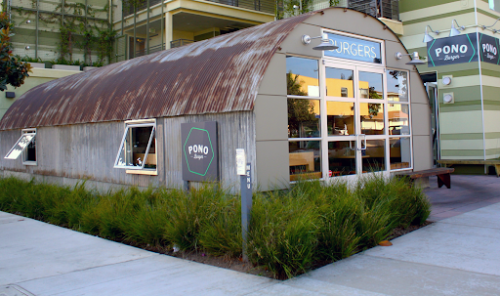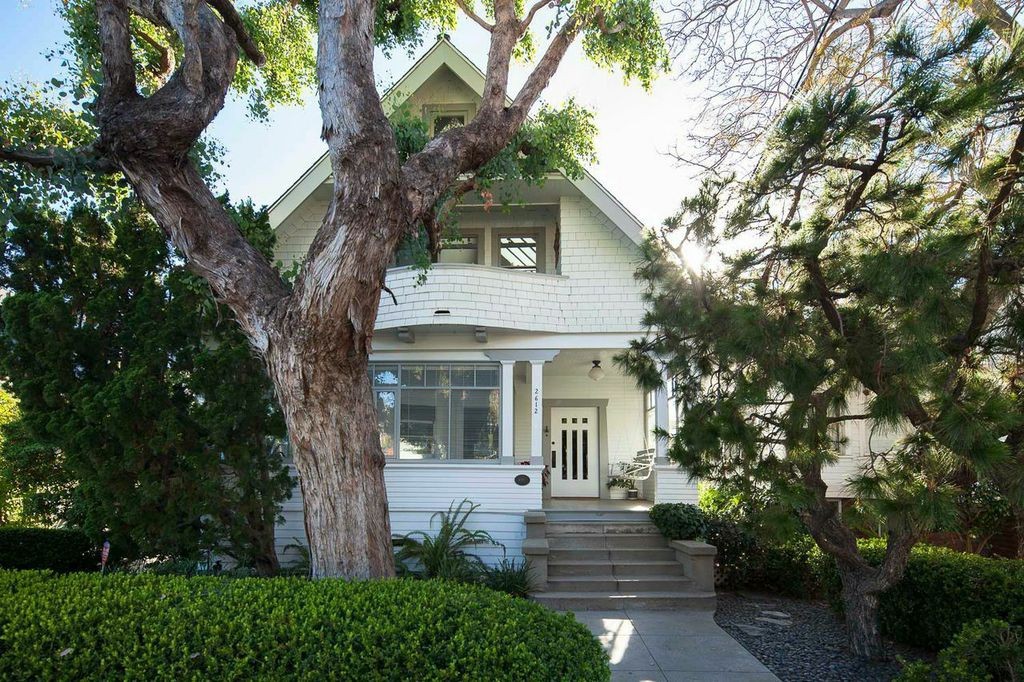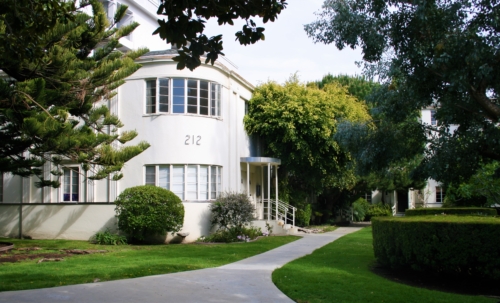News
Figuring Out Preservation Jargon
by Sherrill Kushner
Historic preservation, like most professions and industries, uses jargon, special words or expressions that are particular to the field. What do we mean by adaptive reuse? What qualifies as a landmark? Such specialty words can confound the uninitiated.
To demystify some of our preservation language, see our illustrated glossary. Learn about adaptive reuse, contributing structures, demolition permits, designation, historic districts and landmarks, and fortify your knowledge about historic preservation today.
Adaptive Reuse: It’s like recycling! The process of reusing an old building or site for a purpose other than which it was originally built or designed for.

This World War II Quonset hut was awarded a 2013 Preservation Award for keeping its historic exterior intact while the interior was remodeled. Located at 829 Broadway in Santa Monica, today it houses Pono Burger.

This home and studio, a modest two-story, vernacular commercial building built in 1910, served as a neighborhood market for more than 60 years and was considered a teardown when purchased by artist Tony Berlant in 1976. Photo: India Bushnell
Contributing Structure: building or structure in a historic district that generally has historic, architectural, cultural, or archaeological significance, contributing to the whole district.

2612 3rd Street, a contributing structure to the Third Street Neighborhood Historic District . Photo: Benjamin L Ariff
Demolition Permit: a request to tear down a building in Santa Monica which, if approved by the City’s Planning Department, is issued to a licensed contractor for the work. For structures over 40 years old, a demolition permit may be issued 75 days from the date the application was submitted if no applications are received by the City to designate a building as a City Landmark or Structure of Merit.
Designation: A decision to identify and protect structures that have been determined worthy of preserving because they meet certain evaluation criteria.
Historic District: A definable area with a concentration of historic sites which are unified by plan, physical development or architectural character; or a non-contiguous group of thematically related properties.

San Vicente Boulevard Courtyard Apartments Historic District was designated in December 2015, becoming the third historic district in Santa Monica, joining the Third Street Neighborhood District and the Bay Street Craftsman Cluster.
Landmark: a structure, improvement, natural feature or an object that is designated by the Landmarks Commission which is subsequently authorized to evaluate any proposed modifications that might detrimentally change, destroy or adversely affect the landmark’s exterior.

The the top floor of the Georgian Hotel on Ocean Avenue. The hotel was designated as a landmark in 1995. Photo: The Georgian Hotel
A landmark must meet one or more of these criteria, outlined in Chapter 9 of our Municipal Code:
- exemplifies, symbolizes, or manifests elements of our City’s cultural, social, economic, political or architectural history.
- has aesthetic or artistic interest or value, or other noteworthy interest or value.
- is identified with historic people or with important events in local, state or national history.
- embodies distinguishing architectural characteristics valuable to a study of a period, style, method of construction, or the use of indigenous materials or craftsmanship, or is a unique or rare example of an architectural design, detail or historical type valuable to such a study.
- is a significant or a representative example of the work or product of a notable builder, designer or architect.
- has a unique location, a singular physical characteristic, or is an established and familiar visual feature of a neighborhood, community or the City.
If you have any questions or would like to have more definitions provided in future emails, let us know. Send your inquiry to info@smconservancy.org.
This entry was posted in Newsletter.
Bookmark the permalink.